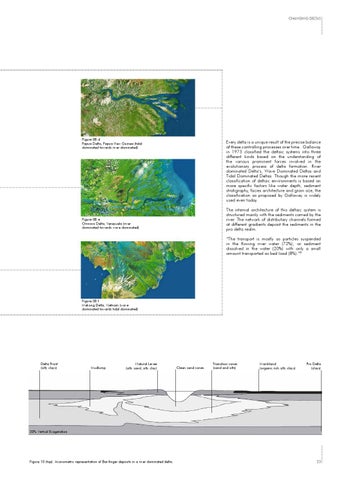CHANGING DELTAS
Figure 08.d Papua Delta, Papua New Guinea (tidal dominated towards river dominated)
Every delta is a unique result of the precise balance of these controlling processes over time . Galloway in 1975 classified the deltaic systems into three different kinds based on the understanding of the various prominent forces involved in the evolutionary process of delta formation. River dominated Delta’s, Wave Dominated Deltas and Tidal Dominated Deltas. Though the more recent classification of deltaic environments is based on more specific factors like water depth, sediment stratigraphy, facies architecture and grain size, the classification as proposed by Galloway is widely used even today. The internal architecture of this deltaic system is structured mainly with the sediments carried by the river. The network of distributary channels formed at different gradients deposit the sediments in the pro delta realm.
Figure 08.e Orinoco Delta, Venezuela (river dominated towards wave dominated)
“The transport is mostly as particles suspended in the flowing river water (72%), or sediment dissolved in the water (20%) with only a small amount transported as bed load (8%).�3
Figure 08.f Mekong Delta, Vietnam (wave dominated towards tidal dominated)
Delta Front (silty clays)
Mudlump
Natural Levee (silty sand, silty clay)
Clean sand zones
Transition zones (sand and silts)
Marshland (organic rich silty clays)
Pro Delta (clays)
20% Vertcal Exageration
Figure 10 (top). Axonometric representation of Bar-finger deposits in a river dominated delta.
23
